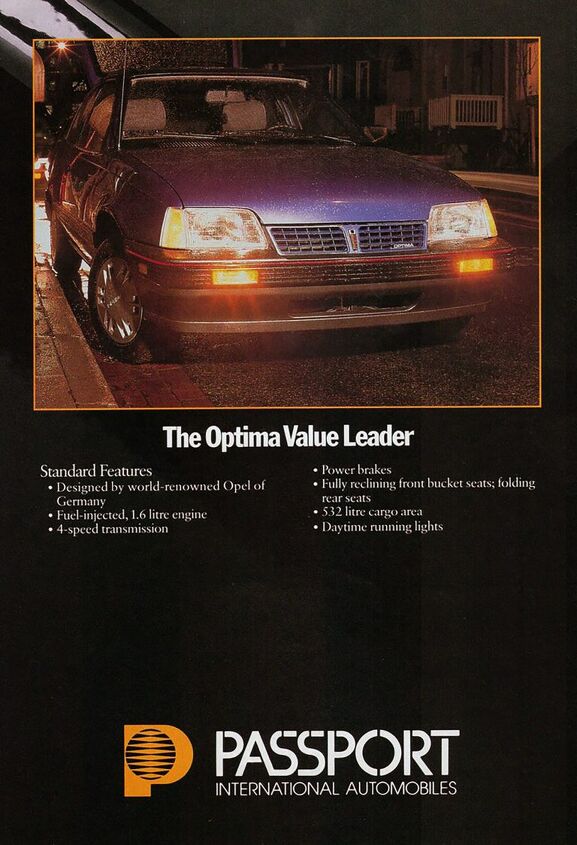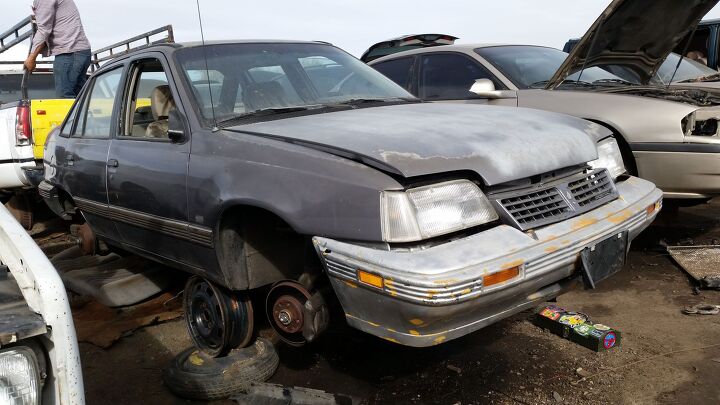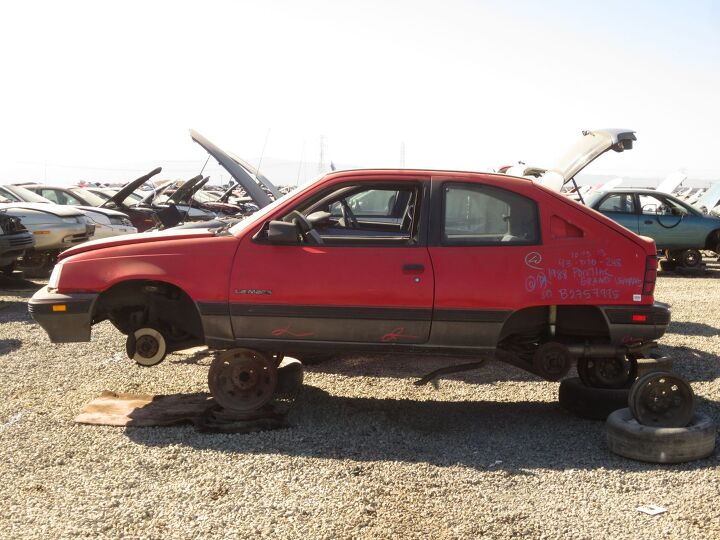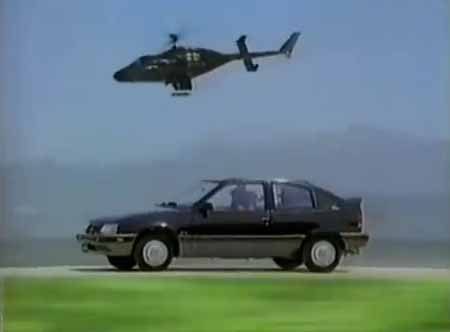#DaewooLemans
Abandoned History: General Motors' Passport and Asna, Total Brand Confusion (Part II)
We started our coverage of GM’s Eighties and Nineties branding adventures last week, with the short-lived experiment that was Passport. The dealership network was an amalgamation of GM-owned or influenced brands from Japan, Sweden, and in the case of the Passport Optima, South Korea. Passport lasted from 1987 through 1991 before GM changed directions. In addition to axing an unsuccessful sales channel, Geo and Saturn cars had arrived during Passport’s tenure and made things more complicated. Let’s learn some more about GM’s Canadian dealership networks.
Abandoned History: General Motors' Passport and Asna, Total Brand Confusion (Part I)
In the Eighties and Nineties, General Motors of Canada decided to try new distribution strategies for its imported cars. Like in the recent Dodge Colt series, General Motors had its own captive import cars and trucks that were manufactured by other brands. But because of dealership arrangements in Canada, GM took things a step further than Chrysler and established a separate distribution network for its imported wares. The efforts lead to the thrilling Passport and Asüna brands for the Canadian market. First up, Passport.
Junkyard Find: 1988 Pontiac LeMans Sedan
Since starting doing this goofy car-writing-online gig 13 years ago last month, I have documented the demise of 2,073 discarded vehicles in excruciating detail. During that time, I have walked right past thousands and thousands of allegedly interesting cars and trucks (sorry, BMW 3 Series fans, but I’ve been trying to make it up to you in recent years) in order to obsess over my very favorite kind of junkyard machines: little– known examples of puzzling badge engineering. That means that when I see the South Korean Pontiac LeMans in a junkyard, I photograph it.
Here’s a low-mile, first-model-year LeMans sedan, found in a Denver car graveyard last spring.
Junkyard Find: 1992 Pontiac LeMans Sedan
General Motors brought Opel Kadetts into the United States via several routes over the years. They came from Germany and were badged as Opels at first, Isuzu built “Buick Opels” a bit later, then Isuzu dealers sold them as I-Marks (the Chevette was also a Kadett sibling, but at least it was American-built). By the late 1980s, the Kadett’s American cousin was the Daewoo LeMans, a crappily-built Korean front-wheel-drive miserybox based on the Kadett E. Few were sold, and nearly all of those were three-door hatchback versions.
Here’s an exceptionally rare LeMans sedan, from the next-to-last year of American-market sales, that I spotted last week in a Denver self-service wrecking yard.
Junkyard Find: 1988 Pontiac LeMans
Back when I saw this red ’88 LeMans at a California wrecking yard last year, I figured that would be the last Pontiac-badged Daewoo LeMans I’d ever see in a self-service wrecking yard. After all, these things sold poorly, were built like crap, and mostly lasted about five years before being stuffed into the nearest car shredder. But no, here’s another example that I saw in Denver a couple of weeks ago.
Junkyard Find: 1988 Pontiac LeMans
We haven’t seen many Daewoo products in this series— in fact, just this ’00 Nubira wagon has made the cut, out of all the expired Lanos es and Leganza s I see— but there was a time when The General saw fit to sell a Pontiac-badged, Opel-based Daewoo LeMans next to its Chevrolet-badged Suzuki Cultus and Geo-badged Toyota Sprinter and Isuzu Gemini. The 1988-93 Pontiac LeMans never was a common sight on American roads, and its iffy reliability and plummeting resale value sent most of them onward via the Great Steel Factory In the Sky by the late 1990s. Still, someone has to win the lottery, and some Daewoontiacs have to survive on the street for as long as Grandpa’s Plymouth Valiant hung on to life. Here’s a miracle LeMans I found at a California self-serve wrecking yard a few weeks back.
Daewoo! The Lost Art of Macho Korean Car-Commercial Voiceovers
Daewoo never had much of a presence in the United States, though I do see the occasional Nubira in the junkyard. That’s too bad, because Korean-market Daewoo ads of the 1970s and 1980s have some of the manliest/cheeziest voiceovers in car-advertising history. Let’s take a look at some examples of the genre.
Curbside Classic: 1989 Ford Festiva – Korea Week Shitbox Shoot-out Loser
The Korean invasion began in the late eighties with three shitboxes: the Hyundai Excel, the Pontiac LeMans, and the Ford Festiva. Korea Week CC pits them against each other to determine the outcome: the Festiva loses the contest by a large margin. Why?























Recent Comments